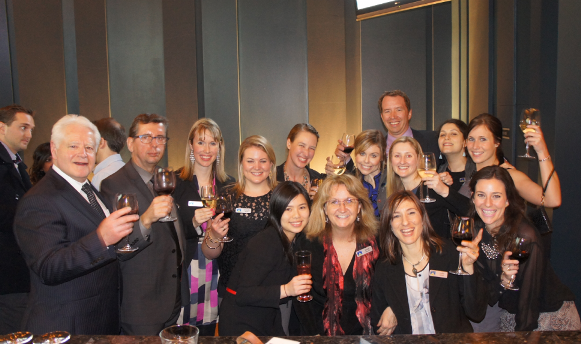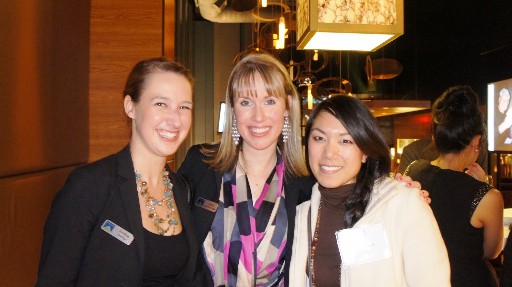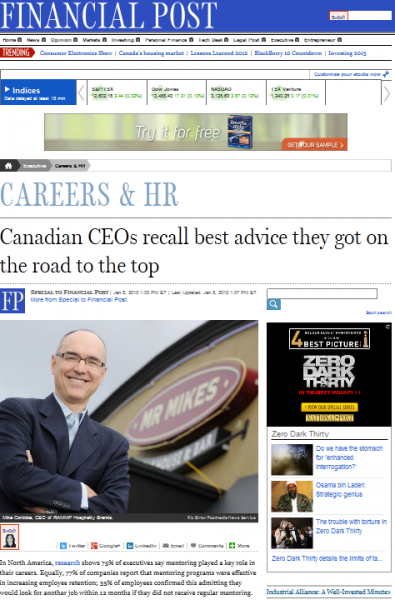I’ve got a short story for you. Two friends decide by text message to meet for coffee.
“What time works for you?” says Marla.
“How about Thursday at 10:00 a.m. at Starbucks?” says Jen.
And then the conversation stops.
Fast forward to Thursday at 10:15 and Marla is waiting, cooling latte-in-hand, for Jen to show up.
“Where are you?” Marla texts Jen (secretly blaming Jen for suggesting a time and then not showing up).
“I didn’t think we were getting together!” Jen texts back (secretly blaming Marla for dropping off the face of the earth).
It’s a textbook breakdown in communication, and in professional settings it can have disastrous consequences.
The funny thing is, the solution to this problem is the easiest and most effective communications method out there, yet many people don’t do it: Follow up.
Here are some amusing excuses people make so they can avoid following up:
- “I already told so-and-so about our meeting/task/deadline.”
- “They’re a grown-up and don’t need reminding.”
- “I’m too busy.”
- “We already have an understanding.”
- “What I have to say doesn’t matter.”
- “I have nothing to say right now.”
- “This issue isn’t a big deal.”
Actually, it is a big deal. That one little message can save a lot of time and mental energy. Marla and Jen would have saved a lot of grief if one of them had simply followed up to confirm that 10:00 on Thursday was a go.
Unfortunately, following up does have a cost. You’re going to have to take the time to say or type a short message. Tough, I know.
But the results can be rewarding – even wonderful.

How to follow up as a communicator
- A quick status update reassures colleagues, clients or journalists that you’re still working on their project, and gives them a better idea when they can expect the results
- A “Did you have a chance to look at my pitch?” can get a journalist to retrieve your story pitch from the heap
- A quick scheduling reminder helps clients and journalists remember to connect for interviews – saving everyone the time and hassle of rescheduling
- Dropping a journalist who is already covering your story a line saying, “Did you need photos or anything else for this story?” helps a news outlet produce a great piece of coverage for your client, and shows journalists that you care about their needs
- A thank-you boosts everyone’s spirits and reinforces positive relationships
How to follow up to build your team
Following up internally will boost your team’s morale and efficiency, and you don’t have to be the team lead to do it.
Motivation can drop in a team that doesn’t communicate simple things like, “Thanks for your message. I got it.” When a team loses touch over time, a subtle sense of non-caring infiltrates the project, and that can seriously dampen morale and motivation.
“But I have no news to tell my team! What’s the point of saying anything?” you might protest. You don’t have to have any news. A simple follow-up of, “I’m still with you,” will help your team members move forward with more confidence, because they know you’re still supporting them.
Obviously, giving kudos to your team members is a great follow-up too, as long as it’s sincere.
But it’s not just about making everyone feel warm and fuzzy. Following up with your project team helps you identify issues that might otherwise have been swept under the rug, only to pop up in the future as full-fledged problems.
So instead of trekking alone and scared in a barren wasteland of non-communication, take the time to regularly invest just a few words of follow-up with your friends, colleagues and clients. You’ll produce relationships that are more positive, teams that are more effective and goals that are more focused.
Some words you can say
If you’re inspired to do more following up, but don’t know where to start, here are a few phrases you can borrow:
- “Just wanted to let you know that I’m still working on ____. I’ll be done ____.”
- “How are you doing with that thing? Any way I can help?”
- “Thanks for that thing you did. I appreciate it.”
- “I’m following up to confirm that we’re meeting at that place tomorrow. Does that still work for you?”
- “I got the ____ you sent. Thanks!”
- “Thanks for letting me know. I’ll give this some thought and get back to you.”
Please feel free to follow up in the comments section below.
Photo credits:
Tags: communication, correspondence, effective communication, Public relations
 Strategy. Possibly one of the most overused yet incorrectly used terms in business today.
Strategy. Possibly one of the most overused yet incorrectly used terms in business today.
Drop the word strategy into discussions around the boardroom table and people start to listen. Not only does it sound good but it is often associated with seniority, experience and high-level thinking. All very impressive. But over the years, I’ve sat in countless business and communications meetings where the word is thrown around, prodded at, sometimes discussed but frequently avoided when you drill down into the substance of what is actually being said, or not said. Forget the elephant, strategy has become the beast in the room – the one that everyone is aware of but no-one quite knows what to do with.

So what exactly is strategy and where do we go wrong with applying this concept?
I’ve spent some time trawling the internet for the best strategy definitions, examples, videos, common pitfalls and I was surprised to see a mess of content that struggles to define what it really is. I’m not saying I have the best definition either but I do remember attending a training session in London a few years back and our strategic master told us that, every time we struggled to articulate what the strategy of a plan was, think about war. After all, the word strategy comes from the Greek, stratēgia which loosely translates as the ‘art of leadership’, particularly in relation to the military.

To put this into context, the next time you have to define the strategy of a business or communications plan, think about what your plan of action is – how are you going to achieve the goals you’ve set out to achieve? How are you going to bring about the desired future (remember the: Where are we now? Where are we going? How will we get there?)? How would you summarize that high-level thinking?
Strategic Planning
This is where having a clear idea of your company’s/client’s purpose (mission), goal (vision) and values is imperative. Defining your competitive advantage is also key (undertaking a SWOT analysis – Strengths, Weaknesses, Opportunities, Threats – really helps too). This is ultimately what will distinguish your business from the rest. If you don’t understand this, your strategy cannot succeed. But once you have defined these points and are confident that you have a high-level plan of action in place that will achieve your end goal, you should quite easily be able to work the other elements of a strategic communications plan out:
- Long- and short-term strategic objectives
- Audience
- Key messages
- Tactics/actions
- Roles and responsibilities (accountability is key in executing any plan)
- Timeline
- Measurement
- Next steps
Common pitfalls

Some of the most common mistakes people make when talking strategy is that they start talking about objectives or tactics instead. It’s also very easy to create a strategic communications plan and then forget about it, or not make anyone accountable. A strategic plan will only be as good as the people who execute it. So you need to ensure that someone is the overall owner of the plan and that everyone else is clear on their deliverables. Communication is vital in the strategic planning process – ideally, multiple stakeholders should have input into the plan and the final plan should be presented to all stakeholders so that everyone is aware of it and understands its importance to the growth of the company.
Equally, progress reports should be shared regularly. And strategic plans do not need to be long. I’ve seen some bibles in my time which, quite frankly, make it difficult to digest page one knowing the long journey ahead. Keep them short, sweet and accessible – they’ll be far more useful this way.

Finally, it’s important to note that strategic plans should be living documents. They should be revisited regularly and updated according to the needs of the company and the demands of external factors.
Happy planning!
Tags: brainstorming, business, communications, key messages, strategic planning, strategy
 It will take years to recover from the devastating flood that hit Calgary and Southern Alberta in late June. Many communities will never be the same. Others suffered so much damage they may never be rebuilt. Yet despite all the destruction, now estimated at over $5 billion, only four people died. It could have been a lot worse if not for a well-executed emergency communications plan keeping residents informed. Social media and traditional media played a vital role in that plan.
It will take years to recover from the devastating flood that hit Calgary and Southern Alberta in late June. Many communities will never be the same. Others suffered so much damage they may never be rebuilt. Yet despite all the destruction, now estimated at over $5 billion, only four people died. It could have been a lot worse if not for a well-executed emergency communications plan keeping residents informed. Social media and traditional media played a vital role in that plan.
During the worst of it, as the rain poured down and rising rivers flooded one community after another along with the downtown, the zoo and Stampede Park, Twitter became an essential information lifeline for thousands of people. With no electricity, residents in affected communities used Twitter for real time information. Mayor Naheed Nenshi was constantly Tweeting to his tens of thousands of followers and the Calgary Emergency Management Agency (CEMA), Calgary Police Service, Calgary Fire

Department and other essential services used Twitter extensively to update flood conditions, coordinate evacuations, provide road closure status and even direct people to emergency shelters. Facebook sites were used to draft volunteers and muster resources and supplies. The flood clearly demonstrated how effective and efficient social media is at disseminating information during an emergency.
Calgary’s news media and in particular the TV stations really came through when it counted. As the flood situation worsened, Global, CTV and CBC affiliates broke into programming and provided wall-to-wall flood coverage for almost 48 hours. As part of its communications strategy, CEMA held frequent media updates and used the media as an information conduit. Mayor Nenshi and officials from CEMA, police and fire were readily available for media interviews. The coverage was critical in keeping the community informed, especially the hundreds of evacuees crowded around TV sets at the emergency relief centres trying to find out if they still had a home to go back to.
Now that the clean-up is underway and thousands of people work to put their lives back in order they can at least be assured that Calgary has an excellent emergency communication plan in place.
Tags: Calgary, Communications plan, crisis communications, flood, news media, newsworthy, southern Alberta
The Peak Communicators team is celebrating this morning: it’s the first time we’ve entered a PR award, and we’ve won!
It’s for Ragan’s PR Daily Awards, which recognizes the best PR campaigns from across the globe.
We’ve been given the ‘Best Crisis Management Award’ for our work supporting a veterinary hospital in Vancouver.
The good news story focused on a dog named Rumble who had been shot during a home break in. The owner had spent $3,500 on treatment but an expensive operation was necessary. The Vancouver based veterinary hospital agreed to donate its services, and Peak capitalized on this from a media relations perspective. Peak worked to distance its client from a former employee who had been charged with a criminal act involving an animal; it also found a good-news story to promote just after the crisis had passed.

This generated widespread positive publicity:
-
- Led to more than $25,000 worth of public donations following the media coverage. This money was used to create a fund for other animals in need of care that would otherwise be euthanized
- Created the highest website traffic to the veterinary hospital in 2012 during the week of Rumble’s surgery
- Led to one concerned citizen knitting a dog sweater and then driving hundreds of kilometers to deliver it to Rumble at the veterinary hospital
We also received an ‘Honourable Mention’ for the ‘Best Fitness/Health Campaign’ for our work with Canadian Diabetes Association.
This is a great start to Peak’s second decade in business!
Tags: agency, awards, crisis management, Public relations, Ragan, recognition

Today Business in Vancouver (BIV) released its annual list of the “Biggest public relations firms in B.C.,” ranking Peak as the largest locally-owned PR firm in the province and the overall fifth biggest PR firm in B.C. this year.
The 2013 BIV list marks Peak’s third year ranked as B.C.’s largest locally-owned firm since its founding in 2003.
“2013 has been a significant year for Peak so far with our 10 year anniversary, new international clients, expansion of our service offerings and a number of new team members,” says Managing Partner Ross Sullivan.
The “Biggest public relations firms in B.C.” list ranks firms based on the number of B.C. public relations staff in a given year. In 2013, international/national firms Edelman, NATIONAL Public Relations, Hill+Knowlton Strategies and Fleishman-Hillard were named the four biggest PR firms in B.C. with teams ranging from 18-49 members in size.
The full 2013 BIV PR list is here.
Tags: agency, BC, Peak Communicators, PR, PR firm, Public relations
Peak hosted its annual birthday party last night but this year was juuust a little more special than years’ past. Time has flown and, incredibly, 2013 marked 10 years for Peak!
Over the last decade Peak has grown into the largest Vancouver-based PR agency and we wanted to celebrate our success together with our clients and friends, without whom the last 10 years would not have been possible.
The party was held at Coast’s O-Lounge, located just around the corner from Peak’s headquarters on Robson. Nearly 80 guests—from clients to media to partner agencies and consultants—came out to toast our next 10 years with wine, beer and delectable appies.
You can check out more photos at Peak’s Facebook page. Thank you again to everyone who joined us—here’s to the next 10 years!




Tags: agency, anniversary, celebration, happy birthday, Peak Communicators, PR agency
Journalists are busy people. They have hundreds of pitches flying at them from PRs daily and often have little support or resources. As a result, media pitches have to be authentic, newsworthy and to the point to get noticed. To help them further, it can be beneficial to package pitches up that offer various experts who are able to give different perspectives on the topic in question. This can save a reporter valuable time having to source a third party opinion themselves. Offering to draft an initial article can also go a long way with time-strapped media.
This is what we did to secure a recent hit in the Financial Post. Peak strategically selected several senior client spokespeople and asked them to share the best advice they’d ever received. To make the piece timely, we pitched it in late December so that it could be published in early January to kick off national mentoring month.
Here’s the end result.

Tags: Financial Post, journalist, pitching, PR, Spokesperson
I had the privilege of being a panel expert at NEXT Marketing & Design Agency’s unique BRAND CHATTER™ event earlier this week. BRAND CHATTER™ is the name coined by NEXT’s CEO, Sandy Gerber – something she uses to describe the buzz around a brand. I joined four other experts in social media, networking and broadcast media. An interesting discussion ensued that gave the 80-strong audience of business owners and marketing directors food for thought. I think the discussion accurately reflected the ever-evolving communications industry – how social media is now a necessity and not really a choice and how the value of traditional media and campaigns is being scrutinized more closely. Business owners now want the most cost-effective options that will create the most buzz and engagement for their brand. So, what’s the answer?
Here are some key take-aways from the discussion:
- Integrated campaigns are key. As seasoned communications consultants, we should be recommending campaigns that have a mix of traditional PR, social media and, depending on the brand and its objectives, an element of advertising. Word of mouth and networking is still crucial to a brand’s success and should also not be ignored. A lot of brands need to reach multiple audiences so leveraging different channels will help achieve this. That said, it’s important to ensure that communications are always clear and consistent, regardless of the platform.
- Keep it simple. Be realistic – you can’t be everywhere all the time. And, if you’re a small business, you will have to prioritize what’s best for your brand. Just because other brands are now exploring Pinterest and Google+, shouldn’t automatically mean that you also have to be there. Perhaps Twitter is your best option at present, along with a simple media relations campaign. Building a brand’s reputation takes time and patience.
- There’s no set formula or template. We were often asked, “where should I be” and “what should I be saying and when?”. The important thing for business owners to realize is that there’s no winning formula that can be applied to every brand. Ultimately, it comes down to what is going to bring you the best ROI. A good consultant should review your vision, objectives, audience, budget and resources and make recommendations off the back of that.
- Content is still king. It’s an old one but a good one. And it won’t go away. However sophisticated a campaign may sound or cost, it must include compelling and regular content that engages a brand’s audience and makes them want to come back for more and share it with others.
- Don’t just broadcast your message. Listen to your fans, followers, readers…Whether it’s through social media or more traditional focus groups, letters to the editor, surveys or blog comments, brands should be responding to the needs of their markets and not just shouting how great they are. If you go with the latter, it may well be falling on deaf ears – you will never know. Ambassadors can be a great way to create BRAND CHATTER – they garner interest and credibility – something that can prove priceless.
- Metrics – this is something every communications professional should feel accountable for. Campaigns can be relatively easy to measure – i.e. number of coverage hits, circulation, readership or the equivalent advertising cost – or metrics can be more difficult to define, especially in the social arena. Still, it’s important that metrics are agreed upon at the outset of a campaign so that everyone involved is aware of what is being used to define success.
Tags: brand chatter, brand engagement, campaigns, Public relations, social media, traditional media
As another New Year begins, it’s time to consider how PR will change in 2012.
PR is one of the fastest-paced – and fastest changing – industries in the world. The evolving role of the Internet, social networks and new technology affects how people digest news. PR professionals need to respond to this change to ensure clients’ messages reach their intended audience.
So what will happen next year? Here are our predictions:
Content: As the saying goes, ‘Content is King’. This will remain true in 2012. Brands, PRs and journalists alike will strive to source or create unique and compelling content that can be shared, ‘liked’, or re-tweeted via social networks.
Exclusives: Given that breaking news is posted instantaneously online, we expect an increased demand for ‘exclusives’ from print publications. Holding a story until the morning is becoming ever-more important for newspapers.
Print won’t die: There has been much speculation about ‘the death of the newspaper’. This won’t happen in 2012, if ever. People love flicking through a newspaper on a Sunday; the experience cannot be replicated online.
Online content may come at a cost: The Wall Street Journal and The Times are trialling ‘paid-for’ only access to their online content. Given the current dependency on advertising and the looming double-dip recession, we may see Canadian newspapers follow suit to increase their cash flow.
Consumer power: Consumers now have a platform to quickly and collectively lobby companies via social networks; expect to see them capitalize on this opportunity with increasing frequency.
Crises: With the increasing speed of information dissemination, the number and pace of crises will intensify. Companies that do not respond immediately will be criticized.
ROI: The need to demonstrate ROI will increase with the uncertainty of the economy; budgets will tighten and C-suite executives will want clear evidence of ROI before investing further in PR. New tools for measurement may be developed as a consequence.
Pitching: Expect to pitch to journalists more regularly via Twitter and Google Plus; it’s an easy way to get journalists’ attention.
Gadgets: Tablets, particularly the iPad, are changing the way people read news. More magazines will develop apps where readers can interact with the content (e.g. clicking on a revolving image to get a 360 degree perspective).
Government regulations: Expect greater transparency in lobbying activity, particularly in British Columbia. This follows a public education campaign by the Office of the Registrar of Lobbyists raising awareness of the hefty fines lobbyists face for not registering their undertakings.
Do you have other predictions to add?
Tags: pitching, Public relations, social media, traditional media
You’ve heard the old adage about the carpenter falling through his own steps. He was so busy taking care of business he didn’t take care of business at home. Reputation managers often overlook their home turf. And it is sometimes at their peril.
For example, there is no such thing as a totally private life when you are a public relations practitioner. Remember that everything you do and say can live on the internet. So if you are going to tweet and blog about a public cause or politics that may not be popular with all your clients and colleagues, remember that this can come back to bite you…hard.
Communicators and public relations practitioners deal with a wide variety of individuals and organizations as clients. They may not always share your views. It is a good idea to remain neutral and apolitical because you could very quickly pigeon hole yourself or your company as being only about one cause or one party. Simply put, this can be bad for business and make it much more difficult to pitch stories to media.
Treat yourself like a brand
As a sole practitioner, a communications manager, consultant or public relations company manager, it’s important to apply the same public relations outreach activities that you do for your clients to build your own reputation.
Look for opportunities to blog about issues. Offer to do media interviews as a communications expert to comment on how individuals or organizations have failed to tell their story in the best way possible. The media is hungry for experts in many fields and communications is a very important element of crisis management.
Look for issues to weigh in on and let the media know you have something to say and are willing to say it. You never get what you don’t ask for and this type of publicity can really draw positive attention to you as a communications consultant, your organization and your services.
If you or your company is offering a new service or have an innovative product, frame the story and offer it up to select media outlets. An ‘earned media’ news feature has much more credibility than buying an ad and can go a long way towards building reputation and profile.
New hires should always be featured in the ‘Keeping Track’ sections of daily and business newspapers with good head shot photos. Again, this is free advertising and you will be very pleased when people comment that they see your organization is progressive and growing.
When you are communicating and doing public relations for others, don’t forget to build, enhance and protect your own reputation with the same communications outreach. It can pay great dividends.
Tags: brand management, communications, media interviews, media relations, Public relations


 Strategy. Possibly one of the most overused yet incorrectly used terms in business today.
Strategy. Possibly one of the most overused yet incorrectly used terms in business today.



 It will take years to recover from the devastating flood that hit Calgary and Southern Alberta in late June. Many communities will never be the same. Others suffered so much damage they may never be rebuilt. Yet despite all the destruction, now estimated at over $5 billion, only four people died. It could have been a lot worse if not for a well-executed emergency communications plan keeping residents informed. Social media and traditional media played a vital role in that plan.
It will take years to recover from the devastating flood that hit Calgary and Southern Alberta in late June. Many communities will never be the same. Others suffered so much damage they may never be rebuilt. Yet despite all the destruction, now estimated at over $5 billion, only four people died. It could have been a lot worse if not for a well-executed emergency communications plan keeping residents informed. Social media and traditional media played a vital role in that plan.







